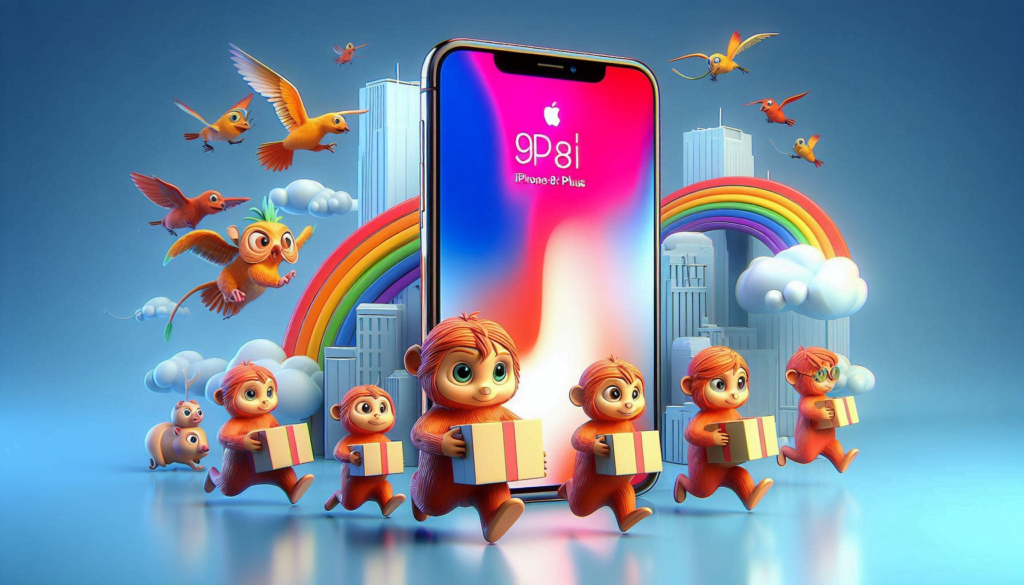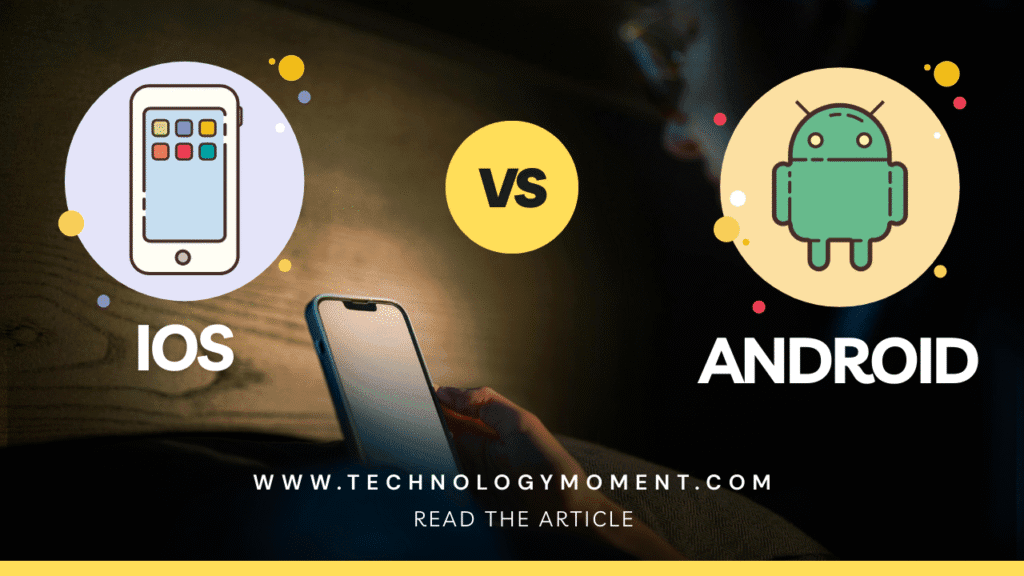
At Technology Moment, we love taking complex tech and turning it into something you can actually enjoy reading. Today, we’re diving into a topic that’s on everyone’s mind: How do smartwatches work? More importantly, what are the hidden secrets tech giants never tell you?
Smartwatches are everywhere now. You see them on students, fitness lovers, office workers, and even grandparents. They track your steps, monitor your heart, show your messages, and sometimes even replace your phone. But how do these tiny devices do so much?
In this guide, we break down the Introduction to Smartwatch Technology in the simplest way possible. No jargon. No confusion. Just clear, friendly explanations. We’ll explore what’s happening under the hood, how your smartwatch reads your body, and why it seems to know you better than you know yourself.
Whether you’re searching for “how do smartwatches work internally”, “smartwatch sensor functions”, or “smartwatch technology explained for beginners”, you’re in the right place. We’ll walk through the five big secrets that tech titans avoid talking about, plus the real science that makes modern wearables so smart.
So grab your smartwatch (or imagine you have one), and let’s jump into the world where health, data, and tiny processors come together on your wrist. This is going to be fun.
How Do Smartwatches Work?
Smartwatches may look tiny, but inside them sits an entire world of tech. When you wear one, you are basically wearing a small computer on your wrist. Every tap, swipe, or vibration you feel is the result of many parts working together at lightning speed. Let’s take a closer look at how this little machine keeps up with your day.
Inside every smartwatch, you will find a microprocessor. Think of it as the brain. It handles tasks, runs apps, and processes your data. It works fast, even though it uses very little power. The processor makes sure your animations look smooth, your heart-rate readings load quickly, and your notifications appear without delay.
You will also find sensors everywhere inside the watch. These sensors track your body, your steps, and your movement. Some watches even measure your heart rate every second. Others track your oxygen level or skin temperature. These sensors keep learning from your daily habits, so the watch becomes smarter the more you use it.
Communication modules also live inside the smartwatch. They help the watch connect with your phone or the internet. Bluetooth keeps it linked to your mobile. Wi-Fi helps it work without your phone nearby. NFC lets you make payments. LTE allows calls and messages even when your phone is off. All these parts work quietly to keep you online, informed, and updated.
The final set of components are the battery, the storage, and the display. The battery powers the watch through the day. The storage keeps your apps and health records. The display brings everything to life with bright colors and sharp text. When these parts work smoothly, your smartwatch feels natural and friendly, almost like a part of you.
Secret #1 – The Sensor Ecosystem That Understands Your Body
Smartwatch sensors do more than track steps. They watch your body, understand your rhythms, and learn your patterns. This sensor ecosystem runs all the time, yet it hardly uses power. It is one of the biggest secrets behind the magic of modern wearables.
The optical heart-rate sensor is the star. It shines a small green light onto your skin. This light bounces back based on blood flow. The sensor reads this bounce. It then calculates your heart rate with surprising accuracy. This is how your watch knows if you are calm or stressed.
There is also a SpO2 sensor. It measures your blood oxygen level. It uses red and infrared light to check how much oxygen runs through your body. It helps detect breathing issues, sleep problems, and even altitude changes.
Sleep tracking happens through a mix of sensors. These include motion sensors, heart-rate monitors, and skin-response systems. Your watch studies tiny movements and changes in your heart rhythm. It then learns your sleep cycles. It can tell if you were in light sleep, deep sleep, or REM sleep.
All these sensors work together in real time. They talk to each other. They share data. They build a complete picture of your health. This teamwork lets the smartwatch understand you better than ever. It can warn you early. It can guide you through stress. It can help you rest better. This is why sensors are the true soul of any smartwatch.
Secret #2 – The Hidden Operating Systems Running Behind the Screen
Every smartwatch runs on an operating system. You may not see it, but it works every moment you use the watch. It starts your apps. It manages notifications. It places widgets where you need them. It keeps everything smooth and stable. This hidden OS decides how your watch feels in daily use.
Wear OS is popular on many global smartwatch brands. It connects deeply with Android phones. It allows voice commands, Google apps, and rich notifications. It gives you many choices for apps and watch faces.
watchOS powers Apple Watch. It is fast, clean, and very secure. It works perfectly with the iPhone. It has advanced health features and smooth animations. The apps load fast, and the system rarely slows down.
Some brands use their own OS. These systems are lighter and faster. They save power and keep the watch running longer. They may not support many apps, but they work well for fitness and daily use.
The truth that companies rarely discuss is software optimization. Even with small hardware, these systems run well because they are tuned to perfection. They balance power, speed, and battery life. They manage sensors carefully. They wake the display at the right time. They keep the watch cool. This is why a smartwatch feels smarter than its size.
Secret #3 – Smartwatch Connectivity: Your Wrist Is Always Online
Your smartwatch stays connected almost all the time, and this connection keeps it useful. Without it, the watch would lose many features. Connectivity is the invisible glue that holds the smartwatch experience together.
Bluetooth is the main link between your watch and your phone. It sends notifications, syncs your steps, and updates your apps. It uses very little power, so the watch can stay linked all day without draining your battery.
Wi-Fi gives the watch the power to work without your phone. If your phone is far away, the watch can still download messages and update apps. It also helps when you use voice assistants or cloud features.
GPS is vital for outdoor workouts. It tracks your route with great accuracy. It measures speed, distance, and elevation. GPS works even without the internet. But it can drain your battery fast, which is why many watches use smart GPS modes.
LTE is the most powerful option. It turns the watch into a mini-phone. You can call, text, or stream music without your mobile. This is very helpful when traveling, running, or cycling. But it needs more power and costs extra in many countries.
The battery drain truth is simple. Every connection uses energy. GPS and LTE use the most. Bluetooth uses the least. Smartwatches smartly switch between these modes to save power. They choose the best option based on your activity. This is how they stay online while still lasting through the day.
Secret #4 – Battery Optimization Tricks That Make Your Watch Last Longer
Smartwatch battery life often feels like a mystery. One day it lasts two days. Another day it dies before the evening. But the truth is, there’s a lot happening inside your watch to save every bit of power. Companies don’t talk about these tricks openly, but they play a huge role in how long your smartwatch survives on your wrist.
Your watch uses a low-power chip that works like a smart energy manager. It decides when to boost performance and when to slow down. It turns off tasks you don’t need at the moment. It keeps only the important things alive in the background. This is why even tiny watches can run for days without needing a charge.
Most watches also use an Always-On Display, but what you might not know is how it works. When the screen looks like it is on, it is actually running in a super-low brightness mode with a reduced refresh rate. Instead of refreshing many times per second, the screen refreshes only a few times. This saves huge amounts of power while still giving you the time at a glance.
Charging is also smarter than it looks. Many modern watches use power-cycle algorithms. Your watch learns your charging habits. It slows down charging when you leave it on the dock too long. This protects the battery. It also keeps the battery healthier for years. You may have noticed your watch charging fast in the beginning and then slowing down. That slowdown is intentional. It protects the battery cells.
Even background apps get strict rules. Some watches freeze apps when they are not visible. Others limit access to sensors unless you’re actively using them. A lot of battery life is saved because your watch is constantly controlling what runs and what sleeps. These tiny decisions add up and give you a longer-lasting device.
Different brands show different performance because of how they manage these tricks. Apple uses custom chips that are extremely power-efficient. Garmin focuses on low-power GPS. Samsung blends battery management and software optimization. Each brand uses a different combination of tricks. That’s why battery life varies so much, even between watches that seem similar.
Secret #5 – The AI and Machine Learning Behind Smartwatch Predictions
AI inside a smartwatch sounds futuristic, but it’s already here. Your watch is always learning about you. It watches your steps, your heart rate, your habits, your workouts, and even how you sleep. It uses all of this data to make predictions that feel almost human.
AI works behind the scenes without interrupting you. It studies your motion and learns the difference between walking fast, climbing stairs, running slow, or sitting still. When your watch shows a workout suggestion, it isn’t a random guess. It is a prediction based on your activity history.
AI also looks at your heart rate patterns. If your heart beats too fast while you’re resting, your watch alerts you. It compares today’s numbers with your usual patterns. Your watch doesn’t diagnose anything, but it gently warns you when something looks unusual. That’s AI doing its job.
Sleep tracking also uses machine learning. Your watch listens to your movement, breathing pattern, and heart rate changes. It studies them over several nights. After that, it starts giving better advice. It tells you when you stayed in deep sleep longer. It learns what habits make your sleep better or worse.
The more you wear your watch, the smarter it gets. AI grows with your usage. It keeps adjusting, improving, predicting, and guiding. It becomes your personal health assistant without you even realizing it.
How Smartwatches Process and Display Information
Your smartwatch might look small, but it handles a huge amount of information every second. It receives data from sensors, apps, notifications, and your phone. It processes all this instantly so you get smooth performance on a tiny screen.
Processing starts with the microprocessor inside. It works like the brain. It takes raw data from sensors. It converts that data into simple information. Your heart rate number, your step count, your calories, and your notifications all appear because the chip organizes everything quickly.
The display also plays a big role. Most modern watches use AMOLED screens. These screens light up each pixel separately. When the background is black, the pixels turn off completely. This saves energy. It also makes colors look bright and sharp. This is why AMOLED is common in premium watches.
When you tap, swipe, or turn your wrist, the watch responds instantly. The haptic engine adds soft vibration to make the interaction feel natural. This little motor creates gentle taps that feel like real feedback. It improves your experience without you noticing how much engineering is behind it.
Everything you see on your watch is designed to be simple, fast, and clear. The UI is optimized so your brain understands information at a glance. Your watch is always working to make the experience feel smooth and effortless.
Are Smartwatches Really Accurate?
Smartwatch accuracy is a big topic. People trust these devices for health and fitness. But the truth is, no smartwatch is perfect. They come close to accurate, but they don’t replace medical devices.
Heart rate tracking depends on light passing through your skin. If your watch is too loose, readings drop. If your skin tone is darker or there’s sweat, accuracy may change. Watches measure trends more than exact numbers. They give good estimates, not clinical precision.
Step counting has the same story. Watches study your movement. They guess steps based on motion patterns. If you walk with your hands in your pockets, some steps may be missed. If you move your arm while standing, it may count extra steps. Again, it’s close, but not perfect.
GPS accuracy also varies. Outdoors, it works well. Indoors or near tall buildings, signals bounce around. This creates small errors. The watch tries to fix these errors using AI, but it is still an estimate.
Sleep tracking gives useful insight. But it doesn’t measure brain activity like a medical sleep test. It reads movement and heart rate. That helps it predict sleep stages. But it cannot confirm them with 100% accuracy.
Even with these limits, smartwatches are excellent for trends. They help you understand your lifestyle, your activity, and your habits. They keep improving every year. As AI grows, accuracy also gets better.
Benefits of Understanding How Smartwatches Work
When you know how a smartwatch works, you see it as more than a gadget. You understand the tiny systems inside it and how they support your daily life. This makes you a smarter user and a more confident buyer. You no longer pick a watch because of hype. You pick one because it fits your body, your habits, and your lifestyle.
You also get better health results. When you understand sensors, you know how to place the watch on your wrist for accurate tracking. You know that tight straps help heart rate readings and that loose straps confuse the sensor. You get clean data, and that data helps you see your fitness progress more clearly.
Knowing how smartwatches process information also helps you manage notifications and battery life. You start using modes that save energy without losing important features. You switch to Wi-Fi when needed, turn off unused sensors, and use power-saving displays. Your watch starts lasting longer because you know how to support its tiny processor.
Understanding smartwatch operating systems gives you more control. You learn how apps run, how memory is used, and how software updates improve performance. You avoid freezing issues, slowdowns, and sync problems because you understand the basics of connectivity and storage.
This knowledge even protects your privacy. When you understand how data moves from your wrist to your phone and then to the cloud, you can manage permissions better. You can choose what you share, when you share it, and which apps can use your health data. You become the owner of your information, not the other way around.
Most of all, you get more value for your money. A smartwatch becomes a tool that helps you move more, sleep better, and stay alert throughout the day. When you know how it works, you use it to its full potential. And that’s when the smartwatch feels like a personal guide rather than a simple accessory.
Future Trends in Smartwatch Technology
Smartwatches are changing fast. Every year they get smarter, lighter, and more advanced. The future of wearables will look very different from what you see today. The next wave of innovation will focus on deeper health insights, longer battery life, and smart features powered by AI.
One of the most exciting trends is non-invasive health tracking. Many companies are working on blood glucose monitoring without needles. This single feature could help millions of people manage health problems with one quick glance at their wrist. Smartwatches may also measure blood pressure without cuffs and detect early signs of illness through skin temperature, hydration, and stress patterns.
Displays are also evolving. Flexible screens and rollable displays will make smartwatches thinner and more comfortable. You may soon see watches that wrap around your wrist like soft bands but show crisp and bright visuals like a phone. These displays will use less power and last longer on a single charge.
AI will play a major role too. Your watch will not only track your steps but also understand your daily rhythm. It will learn when you feel tired, when you focus best, and when your stress rises. Instead of giving random health alerts, it will give personal advice based on your behavior. Think of it as a small digital coach that always pays attention.
More smartwatches will work as standalone devices. LTE and 5G support will grow stronger. You will make calls, stream music, and respond to messages without needing your phone. Watches will handle payment, navigation, translations, and voice commands with more accuracy.
Battery breakthroughs are also coming. Solar charging, new chipsets, and better power-saving systems will push battery life from days to weeks. Some brands are testing kinetic charging, which powers your watch through your natural movement.
The future of smartwatches is not only about features. It is about comfort and personalization. More eco-friendly materials, custom straps, and adaptive UI designs will make the smartwatch feel like part of your identity.
Conclusion
Smartwatches are small, but their technology is powerful. When you understand how they work, you unlock a new world of control and convenience. You get more accurate results, better battery life, and a deeper understanding of your health. You also make smarter choices when buying your next watch.
The future is bright for smartwatch technology. With AI-based insights, flexible displays, advanced sensors, and long-lasting batteries, wearables will soon become your personal health companion. They will help you track your body, guide your habits, and support your daily routine with more accuracy than ever before.
Understanding how smartwatches work helps you enjoy what they offer today and prepares you for the amazing innovations coming tomorrow. Your wrist is becoming one of the smartest places to store technology, and this is only the beginning.
FAQs
How accurate are smartwatch health sensors?
Smartwatch sensors are accurate for daily use, but they are not medical-grade. They use optical sensors and algorithms to estimate heart rate, sleep, and oxygen levels. When worn correctly, they provide reliable trends that help you track your progress.
Can a smartwatch work without a phone?
Yes, many modern watches work without a phone. LTE and eSIM models can make calls, run apps, and stream music on their own. Even non-LTE watches can track workouts, play offline music, and store data until you sync them.
Why does my smartwatch battery drain so fast?
Heavy features like GPS, LTE, always-on display, and constant notifications use a lot of power. If you turn them off when not needed, your battery will last longer. Software updates and power-saving modes also help.
Are smartwatches safe to wear all the time?
Yes, smartwatches are safe. They use low-energy signals that are far below harmful levels. Most users wear them for fitness or sleep tracking without any issues. Keeping the wrist clean and dry helps avoid irritation.
Which smartwatch is best for beginners?
The best beginner smartwatch is one that fits your budget and needs. Apple Watch is great for iPhone users. Samsung Galaxy Watch and Pixel Watch work well with Android. Budget-friendly brands like Amazfit and Huawei also offer strong features for new users.













